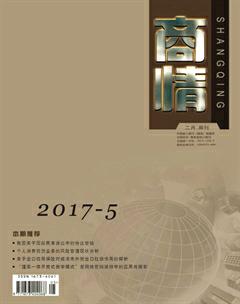Analysis of Impact of Aging Population on Business Model of Travel Agency
王依然

Abstract: Aging population is one of the significant factors that influence the development of tourism. With the aging population, business model of travel agency has been changed gradually. this paper analyzes the development of business model under different surroundings and figure out how aging population impact it.
Key Words: Aging population; travel agency; business model
Travel agencies, which could be regarded as an important part of the tourism market in China, have already developed for decades. During this process, the business model has been changed from basics and simple shape to the complex and mature one, which was caused by many factors, such as social environment, policy, and economy.
Since 1999, China began to step into aging society. Aging population now affect the development of tourism. With the increasing number of aging population, the business model of travel agency has been impacted and changed gradually.
1.Tourism Market on Aging Society
Facing the conspicuous change of population structure, Chinese tourism market witness a historical change. Macroscopically, several circumstances can be found in tourism market, which includes general background of population, national economy condition, residential living standard and consumer preferences.
Conspicuously, to illustrate the change of business model of travel agency, a brief but specific analysis of tourism market background is an indispensable process in this paper. Factors will be mainly divided into two parts: aging population and economy condition.
2. Impact of Aging Society on Business Model
Business model is such a factor that consist of value proposition, target customer segments, distribution channels, revenue model, and strategy which are changeable and flexible under different situations and market period. To find successful business model in aging society, ability of innovation based on product and model now are indispensable for travel agency.
Tourism, as the pillar of tertiary industry, also has remarkable reliance on the consumer. Notably, the indispensable analysis causes that impacted the entire tourism market and business model of travel agency, which is based on the several elements of the results along with aging population, which includes psychological diversity, purchasing habits difference and individualized requirement.
3.Enlightenments of Impact
To sum up the foregoing, tourism industry is beginning to adapt to the senior market, which is growing in its importance. There is still huge need to study more deeply demands of elderly people for satisfying such a broad market. Four dimensions of prospect of tourism market could be found: segmentation of market; differentiation of products; classification of customers; subdivision of travel purpose.
By analysis of travel agencys problems in tourism market, several enlightenments that briefly give prediction of the tendency of market in future could be brought out. As a result, a relationship and process chart will be set up by those factors so that the basic factors of developing tendency of business model could be demonstrated clearly.
Basically, travel agency should focus on establishing more perfect system in several aspects. For instance, the construction of training system that could guarantee relatively higher standard of the guiders and servants for aged tourists.
Conclusion
Chronically, Chinese population aging rate is unprecedented, which demonstrates that China will become a highly aging country in the future, and elderly population is bound to become the main customer of the tourism industry. The advent of aging society has not only brought many disadvantages, but also pregnant with a huge, potential of the market, which generates infinite and new opportunities. Through the aging population background, travel agency can transform the challenges to the opportunity for the development of unique business model of aging tourism, and to promote the prosperity of tourism market.
參考文献:
[1] Jing SY., Jing XH. . The Tourism Constraints of the Aging Population. Revista Brasileira De Reumatologia, 2006,(6).
[2] 中国国家旅游局. 中国旅游统计年鉴[M]. 北京:中国旅游出版社, 2015.

